Vettoretto Curator of North American Archaeology (Curator) at The Royal Ontario Museum
The property
Organization
The Royal Ontario Museum (ROM) is a cultural institution that showcases art, culture, and nature from around the world and across the ages. Among the top 10 cultural institutions in North America and Canada’s largest and most comprehensive museum, ROM has a world-class collection of 13 million artworks, cultural objects, and natural history specimens, featured in 40 gallery and exhibition spaces. ROM's mission is to transform lives by helping people understand the past, make sense of the present, and come together to shape a shared future. The museum is known globally for expanding the boundaries of knowledge and presenting that knowledge in new and innovative ways within the intersecting worlds of art, culture, and nature. ROM's extensive exhibition schedule and public programs attract approximately 190,000 students and 1.3 million visitors or more in a typical year.
With one of the largest collections of Ontario archaeological heritage in the world, and excellent collections of Maya and Zapotec objects, ROM’s collection includes over 300,000 archaeological objects related to economy, subsistence, food preparation and consumption, spirituality and religion, and trade and exchange. As the country’s preeminent field research institute and an international leader in new discoveries, ROM works to build and share global collections, create knowledge, inspire learning, encourage gathering, and spark exchange on topics within the intersecting worlds of art, culture, and nature that matter to people and communities. The long-term vision of ROM is to become a distinctly 21st-century museum. ROM is known globally for playing a vital role in expanding the boundaries of knowledge, presenting that knowledge in new and innovative ways within the intersecting worlds of art, culture, and nature.
Community
Toronto, located on the Treaty Lands and Territory of the Mississaugas of the Credit First Nation, is the largest city in Canada and the most diverse city on the planet (as designated by the United Nations) with over 50% of the population being foreign-born. The provincial capital of Ontario has a vibrant arts and culture scene, with over 164,000 culture jobs and numerous museums and performing arts organizations. Combining its original heritage architecture with the contemporary Daniel Libeskind-designed Michael Lee-Chin Crystal, ROM serves as a national landmark and a dynamic cultural destination in the heart of the city surrounded by universities, colleges, and specialized research centers.
Toronto was the first city in Canada to be designated as a UNESCO Creative City of Media Arts and is also the fastest-growing technology market in North America, with 80,100 jobs created—greater than the job growth in New York City, Seattle, and Boston combined. The city has also been undergoing a construction boom over the last decade. This increased commercial development is coinciding with major transportation upgrades, including the $640 million revitalization of Union Station, Canada’s busiest transportation hub. Toronto also plays a significant role in the global film industry, serving as home to an international film festival and as a filming location for numerous television shows and movies. With vibrant neighborhoods that offer both urban and suburban living options, quality schools, and access to over 50 kilometres of waterfront with beaches, parks, marinas, and waterfront trails; Toronto consistently ranks as one of the most livable cities in North America.
Toward a Deeper Indigenous Partnership
A top priority of ROM’s strategic direction is forging new and stronger relationships between Indigenous nations and communities, and museums. Indigenous people must have a leading voice in determining how their cultural heritage is cared for and shared.
In doing this work, ROM is informed by the Truth and Reconciliation Commission’s Calls to Action, the United Nations Declaration on the Rights of Indigenous Peoples, the recent Canadian Museums Association’s Moved to Action report as well as its 1994 Task Force Report on Museums and First Peoples, and by current museological practices.
ROM has recently appointed three key positions held by indigenous staff including the Hatch Curator of Indigenous Art & Culture, the first Indigenous Interpretive Planner in the Exhibitions Development department, and the Manager of Indigenous Learning and Programs. These positions, in collaboration with the Vettoretto Curator of North American Archaeology, play a critical and leading role in establishing protocols and practices for the care of Indigenous collections and cultural belongings, cultivating formal relationships with First Nations governments, developing exhibitions and galleries, and presenting Indigenous cultures. Recognizing ROM’s origins in colonial practices, the museum is expanding staff training and building internal capacity to create a welcoming work environment for Indigenous colleagues. The museum is in contract discussions with an Indigenous expert in policy and protocols to help us in this regard.
For over 35 years, ROM has worked with Indigenous communities to repatriate ancestors and objects of cultural patrimony from its collection. Over the course of the last year ROM hosted collection visits for 38 Indigenous groups and provided extended consultation with 19 Indigenous groups or individuals, as well as ongoing consultations.
Since 2014, ROM has offered a robust program of Indigenous education, led by Indigenous Museum Educators. This work has been guided by an Indigenous Advisory Circle. Indigenous learning remains the most in-demand school program offering at ROM.
Over decades, ROM’s Daphne Cockwell Gallery dedicated to First Peoples art and culture was developed with Indigenous consultation and partnership. In late 2022, however, ROM closed the Gallery, recognizing it needed to be rethought to further centre Indigenous perspectives. After a brief pause, ROM reopened the gallery and launched a series of updates led by two Indigenous Museum consultants. These ongoing changes put Indigenous voices in the lead and establish a new direction as the museum develops a fundraising plan for a more comprehensive gallery reinstallation and conducts searches to fill critical positions.
ROM’s commitment to working collaboratively with members of Indigenous communities fits within a larger effort to acknowledge its colonial history and become a vital community focal point where people of all cultures feel a sense of belonging.
Position Summary
The Vettoretto Curator of North American Archaeology (Curator) will lead a collaborative approach to stewarding ROM’s North American, and especially Ontario, archaeology collection, creating exhibitions and presenting programs with Indigenous communities and for broad audiences, as well as undertaking research aligned with museum priorities. Leading the repatriation of Indigenous ancestral belongings through deep engagement with relevant communities, in close partnership with the Hatch Curator of Indigenous Art and Culture, along with the Indigenous Interpretive Planner and Indigenous Museum Educator, the position reports to the Co-Chief Curator, Art and Culture, and will be a key voice in rethinking colonial patterns of practice and centering Indigenous perspectives. An accomplished researcher, the Curator of North American Archaeology will propose and develop ground-breaking exhibitions and interpret ROM’s North American archaeology collection in collaboration with communities through inclusive, transdisciplinary thinking, digital practices, and innovation.
The Curator develops and cares for ROM’s Archaeological collection with a focus on North American cultural materials representing over 13,000 years of human history. The collection includes human remains, and continuing the appropriate return to communities is a top priority of the curatorship. The position will also collaborate with ROM’s Learning Department and Indigenous Museum Educators to develop indigenous- centered educational and outreach programming, including supporting the Ontario curriculum in First Nations, Métis, and Inuit Studies. The Curator will explore questions relevant to Canadian archaeology and throughout the contemporary world and will model inclusive interpretation of collections by a community of voices and viewpoints, acknowledging ROM as a forum rather than a sole authority.
Roles and Responsibilities
Collections, Research, and Exhibitions
- Lead the repatriation of Indigenous ancestral belongings (including human remains) through deep engagement with relevant communities, in close partnership with the Hatch Curator of Indigenous Art and Culture, responding to developments in the field and community expectations, and establishing staff repatriation strategies and priorities.
- Establish and lead a vision for the North American archaeology collection, including development of a 10-year collection development plan in alignment with ROM’s mission, vision, values, and strategic plan, and in integration with ROM’s full collection.
- Steward the North American archaeology collection, through fieldwork, study, rotation and display, care and record-keeping, provenance research, digitization, and publication.
- Build ROM’s North American archaeology collection in new directions and through active field research and scholarly endeavor.
- Develop original, scholarly research and publications relating to ROM collections, exhibitions, and related topics.
- Conduct and facilitate research on the North American archaeology collection by visiting scholars.
Exhibition and Gallery Development
- Collaborate with community stakeholders, curatorial colleagues, and interpretive staff to generate innovative visitor-centric and transdisciplinary gallery and exhibition projects.
- Participate in Master Gallery Interpretative Planning (MGIP), and work with ROM exhibition staff to continue the re-development of ROM’s Daphne Cockwell Gallery Dedicated to First Peoples Art and Culture.
- Oversee content development for gallery interventions, rotations, programs, and special exhibitions in North American Archaeology and contribute to larger cross-institutional and transdisciplinary exhibition and gallery projects.
Public Programs and Community Engagement
- Initiate onsite and virtual programs and school curriculum related to North American Archaeology in collaboration with Indigenous Museum Educators and engagement staff.
- Develop relationships with Indigenous communities to build dialogue, interpretation, and pedagogy relating to their ancestral belongings.
- Provide lectures, tours, and workshops to the general public, volunteers, professional colleagues, and museum supporters.
- Cultivate financial and other support for exhibitions, galleries, programs, symposia, acquisitions, research grants, and fellowships through association with professional organizations, foundations, collectors, and donors in collaboration with fundraising staff.
- Embrace other collections, research, exhibition, gallery development, public program, and community engagement duties as needed.
Traits and Characteristics
The Curator will be receptive to and will effectively communicate innovative ideas, methods, and opportunities in honouring the past while framing relevant contemporary societal issues. They will seek to learn and acquire new knowledge and will bring an understanding of people, values, and systems to ROM, demonstrated through respect for differences, a deep understanding of appreciative inquiry, and an ability to build consensus across differences. An enthusiastic and persuasive team member, they will develop strong relationships with colleagues, supervisors, Indigenous communities, exhibition partners, and many other stakeholders who impact, and are impacted by ROM programs.
Other key competencies include:
- Diplomacy – The ability to effectively and tactfully handle difficult or sensitive issues, taking numerous perspectives into account, and advancing productive conversations. ROM’s work intersects with many social and cultural initiatives (Truth and Reconciliation, Repatriation, among others) that can engender trauma and challenging conversation with internal and external stakeholders. Diplomacy in all communications is needed to ensure safety and belongingness across the ROM community.
- Influencing Others and Interpersonal Skills – The dexterity to effectively communicate and personally affect others’ actions, decisions, opinions, or thinking while building rapport and relating well to various stakeholders. All ROM initiatives are a group effort; thus, advocating for one’s professional recommendations and expertise is always part of building respectful relationships across the institution.
- Resiliency – The capacity to quickly recover from challenging or adverse situations, learn, grow, and evolve in contemporary society. The art of working across a large organization engaged in dynamic work in the museum sector to guide collaboration with diverse individuals and groups of stakeholders. Embracing positive momentum while maintaining institutional objectives to drive organizational and sectoral evolution.
- Teamwork and Personal Accountability – The ability to cooperate with others to meet objectives while being answerable for personal actions. ROM is a collaborative environment where individuals must work across departments with their counterparts and be responsible for advancing a variety of initiatives.
- Time and Project Management – The acuity to prioritize and complete tasks in order to deliver desired outcomes within planned budgets and time frames, as well as being adept at working on multiple projects simultaneously and demonstrating a long-term commitment to delivering results on time and within available resources.
Qualifications
The successful candidate will have advanced studies in archaeology, social-cultural anthropology, or a closely related field, or will have the equivalent experience in curation, research, and publication with a focus on North America and in particular Canada and Ontario. Professional experience in a cultural center, museum, or related environment is an asset, as is a demonstrable track record of archaeological field practices through active engagement and collaboration with local communities. A deep understanding, education, and/or practical experience in understanding the complexities and societal pressures involved in collections and exhibitions is required. The successful candidate will have an excellent command of both spoken and written English, and a working knowledge of an Indigenous language is an asset. Prior experience leading or conducting projects with government grants is appreciated.
Qualified applicants may have lived experience of the culture, language, and lifeways of an Indigenous community. The Curator search is part of an Indigenous Cohort Hiring initiative to realize ROM’s commitment to having Indigenous staff throughout the organization and to ensuring that Indigenous employees find a welcoming environment and a supportive community.
Compensation and Benefits
ROM offers a competitive salary and comprehensive benefits package, including a base salary estimated to be in a range between $87,664 and $146,234 (CDN), dependent on experience, with full medical and dental insurance, a total of 22 days of pro-rated paid time off, and inclusion in the ROM pension plan (via CAAT). This position is part of the ROM Curatorial Association union.
Applications and Inquiries
To submit a cover letter and resume with a summary of demonstrable accomplishments (electronic submissions preferred), please click here or visit artsconsulting.com/opensearches.
For questions or general inquiries about this job opportunity, please contact:
Bruce D. Thibodeau, President
Jeff Erbach, Associate Vice President
Arts Consulting Group
52 Church Street, Suite 217
Toronto, Ontario M5C 2B5
Tel (888) 234.4236 Ext. 201 (Dr. Thibodeau) or Ext. 241 (Mr. Erbach)
Email ROM-CuratorNAA@ArtsConsulting.com
Royal Ontario Museum acknowledges that this museum sits on the ancestral lands of the Wendat, the Haudenosaunee Confederacy, and the Anishinaabek Nation, which includes the Mississaugas of the Credit First Nation, since time immemorial to today.
ROM is committed to fair and accessible employment practices and considers equity, diversity, and inclusivity to be foundational to its institutional success. ROM seeks to foster a workplace that reflects the full breadth of the communities it serves and welcomes applications from women, racialized persons, Indigenous/Aboriginal People of North America, LGBTQ2S+, and people with disabilities. Upon request, suitable accommodations are available under the Accessibility for Ontarians with Disability Act (AODA) to applicants invited to an interview.
Click here for the downloadable PDF.
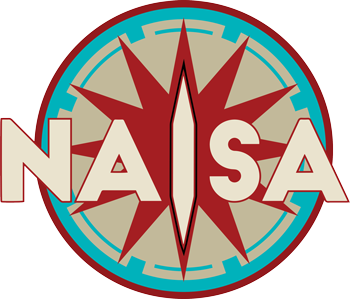



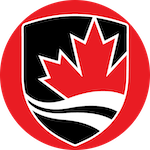
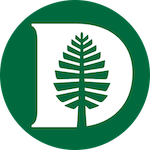
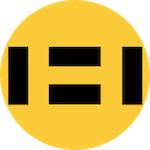
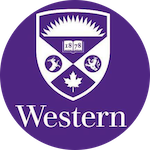
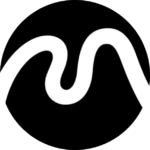

Sorry, the comment form is closed at this time.